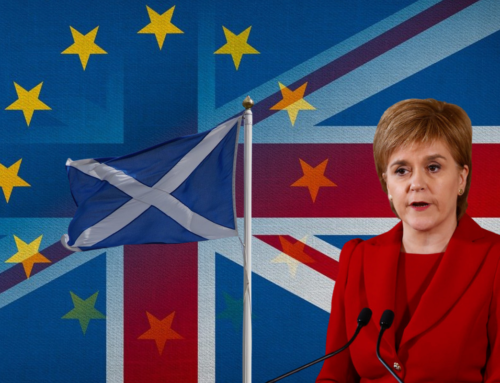By Zach Paikin
There is a perception among many politicians and commentators in the United Kingdom that federalism is an entirely prescriptive and rule-bound system, in which all contingencies are precisely described and defined in advance. This couldn’t be further from the truth.
An examination of the history of federalism in Canada will show us that federalism is in fact a flexible, evolving system. But perhaps even more importantly, it will demonstrate that that very flexibility allows a diverse country with a federal structure to face up to critical – sometimes even existential – strategic challenges.
Broadly speaking, federalism’s flexibility has been evidenced throughout Canadian history in two fashions. First, the distribution of power between Ottawa and the provinces has evolved with time. Second, the constitutional lines delineating federal and provincial responsibility have shifted over the decades.
Canada’s Fathers of Confederation initially envisaged – and created – a very centralized federation. This centralization was key when it came to preventing Canada from being overrun by the pressures imposed by the American Civil War and Manifest Destiny. However, after Canada and the United States established peaceful relations in 1871, several rulings issued over time by the Judicial Committee of the Privy Council in London subsequently delivered more and more power to the Canadian provinces.
In short, federalism proved itself to be flexible enough to allow Canada to deal both with the existential threats it faced as a fledgling nation and with the governance-related challenges it confronted in the years that followed.
Judicial rulings are not the only instrument that has produced increased devolution throughout Canadian history either. Following Quebec’s failure to sign Canada’s newly repatriated constitution in 1982, Prime Minister Brian Mulroney’s government chaired constitutional negotiations with the provinces designed to secure Quebec’s support. The resulting Meech Lake Accord proposed measures to increase provincial autonomy regarding immigration, the appointment of senators, participation in the federal government’s programmes, and the process of amending the constitution.
Although the Accord died when it failed to obtain unanimous legislative approval among the provinces, many of its central tenets – such as recognition of Quebec’s distinct status within Canada and increased federal respect for provincial jurisdiction – are political realities today. The conclusion is clear: Federal structures and equilibria can and do evolve with time, and this flexibility is precisely what allows for the development of the accommodations necessary to preserve national unity in a diverse society.
Furthermore, the originally rigid, formal distribution of constitutional powers in the Canadian federal system has also evolved throughout the years. At Canada’s founding, federal and provincial responsibilities were clearly delineated in Sections 91 and 92 of the newly written Canadian constitution. Ottawa and the provinces were supposed to operate within “watertight compartments”, not interfering in one another’s affairs.
This is no longer the case today. The federal government provides the provinces with hefty health and social transfer payments. Ottawa also issues post-secondary student loans, even though education is supposedly a provincial responsibility. For their part, Canada’s provinces often involve themselves in areas of federal jurisdiction, such as international trade and aid. Once again, we can see federalism’s robust ability to adapt to changing realities in geopolitics and governance.
By now, it should be apparent that federalism’s structure is designed to provide a framework for national stability and accommodation. Restrictions on a government’s ability to enact its vision are, just as in the case of unitary states, more often political than they are constitutional. Stability, reliability, and an enhanced national unity framework are clear positive outcomes generated by the federal model.
And at times, as previously mentioned, federalism can also serve as an essential means of securing key strategic interests. The pre-1867 entity known as the United Province of Canada experienced constant political deadlock, rendering it unable to defend itself against the quasi-irredentist posture of its neighbour to the south. Only a political accommodation between Canada’s English and French communities could bring an end to the gridlock. Federalism was the logical answer, and the resulting constitution included a provision for the protection by provincial governments of the Protestant and Catholic minorities’ education systems in Quebec and Ontario, respectively.
Federalism therefore proved its worth in Canada both in 1867 and in the years that followed. It has adapted time and again to meet the various needs of Canadian society, and has served as the cornerstone of a country that is decentralized but united. As the United Kingdom potentially approaches a referendum on EU membership that could see England and Scotland vote differently, British leaders should consider the fact that federalism may be the key to keeping the country together in its wake.
If the entire UK votes to leave the EU in 2017 but Scotland votes to stay, another plebiscite on Scottish independence will become a near certainty. A pre-referendum federal arrangement between Westminster and Holyrood may increase the odds that Britain’s three-century-old union will be preserved, 150 years after federalism saved Canada in 1867.
Zach Paikin is a columnist for the Canadian political publication The Hill Times.
Read his column in The Hill Times of 6th May 2015: British leaders make no effort in election campaign to confront country’s growing Europhobia








[…] the CCRF understood that no rights are truly inalienable, and that a constitution must be able to adapt to the imperatives of certain urgent […]